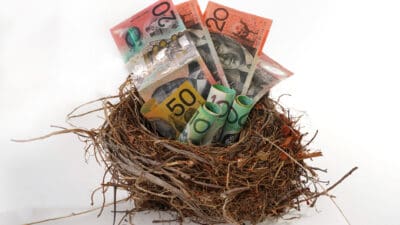Stock experts, especially at this time of the year, love to give their opinions on where the share market is headed.
But IML portfolio manager Michael O'Neill reckons such comments are useless to long-term investors.
"Any experienced investor will tell you that it's incredibly difficult to time the market," O'Neill said on the IML blog.
"What you're better off doing is looking at long-term fundamentals and trends and making decisions on where you're likely to get the best return in the medium to long term."
Capital growth will be anaemic in the coming years
For the IML team, long-term drivers point to investing in dividend shares at the moment.
O'Neill reckons we simply won't see the same amount of capital growth over the next decade as we enjoyed in the previous 10 years.
"Ultra-low interest rates and readily available, cheap money drove a very long bull market. With high inflation and rising rates, that time has passed," he said.
"While markets may or may not perform well in 2023, what is very unlikely is that we'll enter another long bull market with a similar amount of capital growth."
This means that dividends will make up a greater proportion of total investment returns for the rest of the 2020s.
"For us, with capital growth likely to be lower in the medium-long term, it's the right time to place greater focus on income."
O'Neill predicts volatility will remain pervasive in 2023.
"While this makes it a challenging market for investors, it does also offer opportunity," he said.
"With company valuations fluctuating, it's a stock pickers' market, with a great chance to pick up high-quality companies at bargain prices."
Reliable in turbulent times
O'Neill named two reasons why dividend shares are superior in uncertain times: reliable returns and safety net.
He cited a historical breakdown of the S&P/ASX 300 (ASX: XKO), which showed a remarkable statistic.
"Over the last 20 years, dividends have returned 51% of overall returns," said O'Neill.
"While this figure alone is evidence enough of dividends' importance, it becomes more striking when you look at the volatility of these returns."
Standard deviation of capital growth was 14 percentage points, while income was just 0.2.
"Return on capital fluctuates significantly, but dividend returns are remarkably reliable," said O'Neill.
"While the level of capital returns from a share portfolio depends on movements in individual share prices, this is not the case for dividends. That's because the level of dividends received by an investor is decided by the company's board and is generally a reflection of the company's overall profitability."
As for dividend shares acting as a safety net, O'Neill pointed to the years when capital losses piled up.
"In the peak of the tech wreck in 2002, the ASX 300 provided a return on capital of -12%, but dividends returned 3%. In 2008, at the start of the GFC, capital dropped -42%, but dividends returned +3%," he said.
"And while the share market recovery from COVID was very swift, the ASX 300 still dropped -1% but income? It returned a steady 3%."









